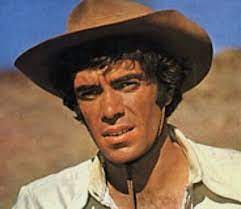On 22nd of September 1955, ITV first began to broadcast in the UK. The network had very few programmes available to them and they turned to two sources to make up for the shortfall. One, of course, was the United States. The other was Australia.
I remember watching many Australian TV shows in the early 60s including one I loathed, The Terrific Adventures of the Terrible Ten. I found them neither terrific nor adventurous but certainly terrible.
Other programmes, however, still live in my memory.
Whiplash was not about the Marquis de Sade but about the Australian stagecoach company Cobb and Co. All the time that I watched it, I assumed it was set in America.
I liked The Flying Doctor, once telling my doctor that I didn’t want him, I wanted the more exciting Aussie to treat me. Except the actor was not Australian but the American star, Richard Denning. He acted in many Science Fiction films, played Lucille Ball’s husband for a time and later starred in Hawaii Five-O.
Skippy the Bush Kangaroo was a late comer to my viewing and I rarely watched it although annoyingly I can still sing part of the song.
And then, in 1972 there appeared Boney, about a detective who was half-Aborigine and half-white Australian. It had a troubled start. American investors pulled out when the producers refused to change Boney to a white man. The producers searched for a mixed-race actor but said they were unable to find one.
On the verge of them pulling production, the New Zealander James Laurenson arrived for an audition. He was an experienced Shakespearian actor, a safe pair of hands, and he got the role although the producers insisted that he wore dark makeup.
This did not go down well with some of the Aboriginal community but it was certainly the first time that I had seen them treated with any degree of importance.
So, gasp, there were people in Australia before Captain Cook arrived? And gasp again, it seemed that not all of them lived in the arid, desert interior. Originally many inhabited the more temperate and rich coastal areas. But guess what? Their lands were taken by the immigrant whites. They now make up less than 4% of the population of Australia.
For a variety of reasons, the Aboriginal people have been considered one of the least advanced of the world’s people. After all, some people say, they insist on living in one of the most challenging environments in the world. Except few of them did, it’s just that the whites didn’t want these lands. Not only that, people sniff, they boast few inventions other than the boomerang and the didgeridoo.
And yet…..
The ancestral inhabitants of Australia were perhaps the first great travellers of the human species. They were amongst the first Homo Sapiens to leave Africa and they travelled incredible distances, including lengthy sea voyages. They discovered Australia a little while before Europeans got there.
They arrived in Australia 60,000 years ago, perhaps even earlier. They spread across the continent within 6,000 years, developing 250 languages. Our European ancestors were laggards by comparison, arriving in the continent 45,000 years ago. And they didn’t have to go by boat.
The aboriginal culture is probably the longest lasting of the modern human species.
Madjedbebe rock shelter in the Northern Territory has some of the earliest traces of human habitation. Amongst the finds are grinding stones, axes, including one made by grinding rather than flaking, and possibly wall paintings. They adapted to massive changes in climate and the environment. I’ve been without a flushing toilet for almost a week and I’ve moaned about having to carry water in a bucket the twenty steps from my kitchen to my toilet. I am in awe of the intelligence, creativity and resilience of the Abortiginal people. Fortunately, Madjedbebe is protected by its Aborigine owners.
So the history of Australia is one of the most fascinating upon earth. It’s more, much more than merely Boney the detective.
And dear readers, worry not. My toilet has just been mended.







Thank you, Prue. And it's time that we paid more attention to the culture.
The First Nation philosophy on caring for our lands is one that state and federal governments are now paying serious attention to. Particularly as climate change makes its mark. A 60,000 year old culture has rather a lot to offer.